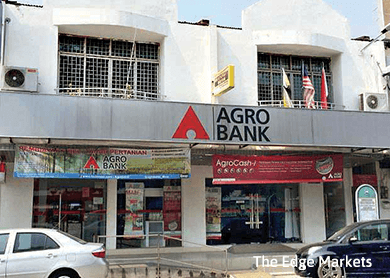

KUALA LUMPUR: State-owned development financial institution Bank Pertanian Malaysia Bhd (Agrobank) missed its self-imposed deadline of turning into a full-fledged Islamic bank in 2009, but intends to achieve that now by the end of this year.
Turning into a full-fledged Islamic bank means it will be able to offer a wider range of syariah-compliant banking products.
If all goes well, Agrobank will be the 17th institution to be included in Bank Negara’s official list of Islamic banks, whose combined assets stand at RM625.22 billion, 25.6% of total banking assets in Malaysia.
“We were not able to meet the earlier target date as we had to consolidate our operations and systems ... we only launched our Internet banking platform three years ago, on July 7, 2012. It has been a long walk to achieve our target, with hiccups here and there,” Agrobank president and chief executive officer Datuk Wan Mohd Fadzmi Wan Othman told The Edge Financial Daily late last month.
Established in 1969 and corporatised in 2008, the agriculture-focused bank currently has 190 branches nationwide, with 258 automated teller machines and 3,347 staff.
“Competition in the Islamic banking segment is expected to be intense, but our niche position is sufficient to withstand a somewhat irrational market. Our financing is now 100% syariah-compliant. More than 90% of our conventional assets have now been converted into Islamic assets. Insha Allah (God-willing), we should achieve our target by end of this year,” he said.
Backed by 1.94 million depositors, Agrobank’s total assets stood at RM11.59 billion as at June 30, 2014, of which 87.8% or RM10.18 billion were Islamic banking assets.
Agrobank improved its gross impaired loan ratio to 9.85% from 22.13% in 2010. Still, it is eight times higher than the industry’s 1.2% to 1.7%.
“We need to balance between being robust and at the same time fulfil our mandate of spurring growth in the agricultural sector. I want the bank to have gross impaired loan ratio that is at par with other commercial banks. But for now, our asset quality is still manageable and we will continue to improve this,” he added.
Agrobank’s cost-to-income ratio stands at around 50%, which he said is within the industry’s range of between 40% and 55%. Despite not having a current account service, Wan Mohd Fadzmi said Agrobank’s financing-to-deposit ratio is at 75%, in line with the industry’s average of between between 65% and 85%.
He said Agrobank does not rely only on government funds but generates its own, too, from savings and fixed deposit accounts, which grew 1.6% to RM6.7 billion as at June 30, 2014, from RM6.59 billion in 2013.
“We receive some form of financing from the government, for which we have to pay the profit rate plus the principal. But through this, we can offer competitive financing products to our customers at a concessionary rate of 3.75%, perhaps the lowest in town,” he explained.
“We are seeing pressure on margins from stiff competition. We need to keep our costs low and offer financing rates at optimum levels to secure stable and sustainable margins,” he said.
Wan Mohd Fadzmi expects Agrobank to grow its loans by between 7% and 9% this year, driven by agricultural activities in the upstream segment, like farming and cultivation, and downstream segment activities like food processing (agrofood).
The bank is mandated by the government to mobilise 70% of gross loan portfolio for primary agricultural activities, such as food crops, livestock, forestry and fisheries, with the remaining 30% for the retail sector for products and services like personal financing.
“Agriculture accounts for 9.2% of the country’s gross domestic product in 2014. We expect the agricultural sector to grow moderately between 0.8% and 1.3% this year, as we take into account the challenging commodity market, extreme weather condition, weak commodity prices and food crop diseases. As for agrofood, we are forecasting it to grow 5.3% this year to reach RM28.9 billion,” he said, adding that it has more than 33% of market share in agrofood financing.
For the cumulative six months ended June 30, 2014 (6MFY14), Agrobank’s net profit was down 71% to RM39.95 million from RM136.76 million for 6MFY13, on lower net income, which fell 24% to RM266.5 million from RM351.57 million previously.
This article first appeared in The Edge Financial Daily, on June 8, 2015.